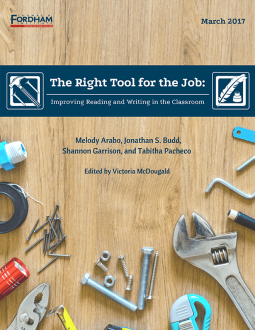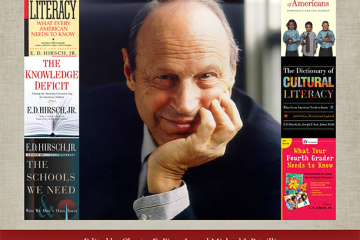Although it’s been almost seven years since many states took the important step of elevating their academic standards by adopting the Common Core, teachers and administrators across the country still bemoan the lack of reliable information about which instructional materials are high-quality and best aligned to the new standards.
One recent survey found that a whopping 90 percent of districts reported having major or minor problems identifying high quality, well-aligned resources. A second study found that the majority of textbooks had substantial alignment problems. In response to these reports, several entities such as EdReports, the Louisiana Department of Education, and the California Curriculum Collaborative have begun providing educators with impartial reviews of core instructional and curricular materials. Yet next to no information exists on the quality and content of resources intended to supplement a full curriculum.
The Right Tool for the Job fills that void by providing in-depth reviews of several promising digital learning tools. We focused the series on English language arts (ELA) resources, as educators stress that those are particularly difficult to come by, especially writing tools.
Four all-star educators evaluated the quality and usefulness of the tools: Melody Arabo (a third-grade teacher at Keith Elementary in Michigan), Jonathan Budd (K–12 curriculum director for Trumbull Public Schools in Connecticut), Shannon Garrison (a fourth- and fifth-grade teacher at Solano Avenue Elementary School in California), and Tabitha Pacheco (an instructional facilitator at a virtual academy in Utah).
These educators reviewed the strengths and weaknesses of nine K–12 ELA/literacy instructional tools:
- Achieve the Core’s “Text sets,”
- Curriculet,
- iCivics Drafting Board,
- Lexia Reading Core5,
- Newsela,
- Quill,
- ReadWorks,
- ThinkCERCA, and
- WriteLike.
Three of these feature text sets, i.e., collections of texts tightly focused on a specific topic, designed to build students' content knowledge, vocabulary, and conceptual understanding.
Overall, reviewers found these new resources mostly reflect the instructional shifts called for by Common Core (such as including a balance of text types and text-dependent questions for reading and writing). They also lauded the innovative nature and usefulness of text sets as instructional tools, as well as online resources’ student assessment and data reporting capabilities. However, our reviewers found that usability was uneven across products, and stressed the need for clear instructions on how to incorporate each tool’s activities into a teacher’s broader class curriculum. They also cite a lack of information regarding accessibility and accommodations for students with learning disabilities.
Identifying high quality, standards-aligned supplemental tools is extremely time consuming for educators who attempt to do it on their own. This collection of reviews returns some of those hours back to them.




